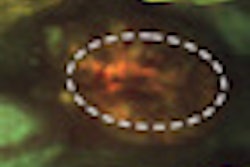Using a new surgical approach, surgeons rebuilt the trachea and preserved a patient's voice after removing an invasive throat tumor, according to a case study presented January 29 at the Triological Society's Combined Section Meeting in Scottsdale, AZ.
The case involved a 27-year-old man who had a large mass blocking 90% of his airway, making it very difficult for him to breathe, a medical team from Henry Ford Hospital reported. After a biopsy and other tests, the doctors determined the mass was a malignant immature teratoma -- a cancerous tumor that was quickly spreading throughout the areas of the patient's trachea and surrounding structures.
Surgeons first removed the tumor and about half of the patient's airway, just below the voice box. Using bone and skin from the patient's arm and two titanium plates, they reconstructed the airway, providing it with full coverage and allowing it to be fully functional.
Reconstruction of the trachea is challenging, due to the structural complexity and unique properties of the airway, the doctors noted. The ideal reconstruction must not collapse during respiration and have some degree of mobility to allow for neck movement.
This case study is the first of its kind to document a successful technique to create a fully functional trachea and also report a rare type of malignant tumor in an adult's trachea, said Samer Al-Khudari, MD, with the department of otolaryngology-head and neck surgery at Henry Ford Hospital, in a press release. Most commonly, this type of tumor is seen in newborns and very rarely occurs in the neck, he noted.
"In this case, the patient's tumor had spread to the trachea, thyroid gland, muscles around the thyroid, gland, and nerves in the area," he said.
According to head and neck cancer surgeon Tamer Ghanem, MD, PhD, who led the Henry Ford surgical team, the easiest approach would have been to remove the trachea and the voice box, given the tumor's proximity to the larynx and other surrounding structures. With this method, however, the patient would no longer be able to speak or swallow normally.
Instead, the surgical used tissue and bone from the patient's arm to reconstruct the trachea, restoring airflow through the trachea and saving the patient's voice.
"We had to think outside the box to not only safely remove the tumor, but to allow for optimum functional outcome," Dr. Ghanem said. "This is the first time such a large portion of a patient's trachea has been removed and rebuilt in a way that allows it to be fully functional."
Currently the patient is using a tracheostomy tube, but the surgeons do not expect it to be permanent. The patient, however, is able to speak and swallow normally. He also underwent chemotherapy as part of his treatment.
Copyright © 2011 DrBicuspid.com



















